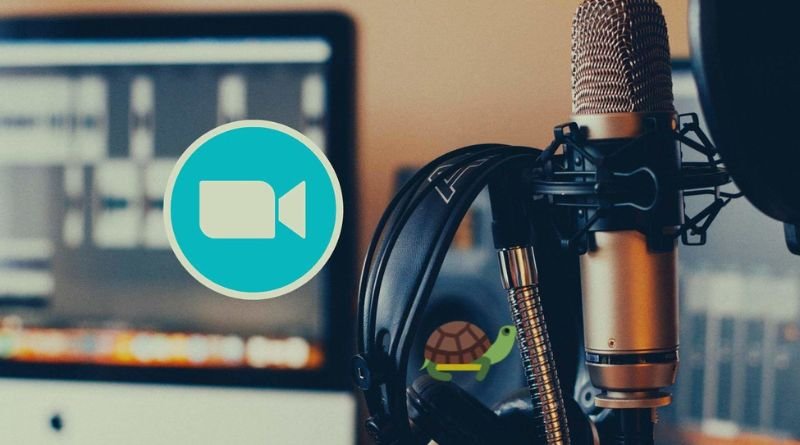The 8 Best Ways to Improve Your Audio in a Zoom Meeting

When you’re in a meeting, audio can make or break your experience. If the audio quality isn’t good, it’s easy to lose your train of thought or not be able to hear what others are saying, which could lead to time wasted and more misunderstandings than necessary. If the audio is too quiet, then you might have to turn up the volume on your computer, which could potentially disturb others who are working while you’re talking—not to mention it can be distracting in general when sound levels change.
Speaker Distance
Zoom offers a great audio experience, but there are a few things you can do to make sure your end of the conversation is clear and audible. First, make sure you’re not too far away from your microphone. A distance of three to six inches is ideal. You should also try to find a quiet spot to minimize background noise. If you can’t avoid echo, try using headphones or earbuds. Lastly, speak clearly and at a moderate volume so that your voice comes through clearly on the other end.
Microphone Placement
To get the best sound quality in your Zoom meeting, pay attention to microphone placement. For example, if you’re using a headset, position the mic close to your mouth but not so close that it’s rubbing against your clothing. If you’re using a desktop mic, place it on or near the desk surface. And if you’re using a lavalier mic, clip it onto your shirt collar or lapel. In general, you want the mic to be as close to your mouth as possible without being in the way.
Mic Placement
Microphone placement is key for getting good audio quality in a Zoom meeting. If you’re using a headset, the mic should be close to your mouth. If you’re using a laptop, place the mic as close to your face as possible. For best results, use an external microphone.
Background Noise
One of the most common complaints about Zoom meetings is the audio quality. In order to ensure that your meeting participants can hear you loud and clear, there are a few things you can do:
- Make sure you have a strong internet connection.
- Use a headset or earbuds instead of your computer’s built-in microphone and speakers.
- Mute yourself when you’re not speaking.
- Use the suppress background noise feature in the settings menu.
- Position your microphone close to your mouth, but not too close.
- Avoiding wearing headphones with built-in microphones.
Adding a Second Audio Channel
If you’re serious about getting the best audio quality in your Zoom meetings, you should consider adding a second audio channel. This can be done by using an external microphone or by connecting your computer to an external sound system. Here are eight ways to get started -Add a Second Audio Channel: The most effective way to improve your audio is to add a second audio channel. Doing this will give you more control over volume and can eliminate feedback loops.
-Use Headphones: Plugging headphones into the speaker output of your computer will help block out distracting background noise so that all listeners hear only what’s coming from the speakers.
Use A Handheld Microphone
A handheld microphone is one of the best ways to improve your audio in a Zoom meeting. It allows you to be more mobile and gives you the flexibility to move around the room. Plus, it’s easier to speak into a handheld microphone than it is to speak into a built-in microphone on your computer or phone. Here are eight tips for using a handheld microphone in a Zoom meeting – Use a mic stand: When using a handheld mic in a Zoom meeting, attach it to a mic stand. Not only will this make you look professional but it will also keep your hands free so that you can flip through slides or write notes. Make sure that there’s no cord between the mic and its stand because this could cause feedback when someone walks behind you.
What I Use For Streaming Events
If you’re looking for ways to improve your audio in a Zoom meeting, you’ve come to the right place. In this blog post, we’ll share eight tips that will help you sound your best. 1) Set up an event with a speaker phone. When you can’t be onsite, a speaker phone is key for streaming events. 2) Use the appropriate mic settings for your environment. It’s not just about what mic to use–you need to use it correctly!
Avoid Squeaky Floors
- If you have hardwood floors, avoid walking on them if possible. If you must walk on them, try to do so as quietly as possible.
- If you have tile or linoleum floors, put down some rugs or mats to help muffle the sound of your footsteps.
- Close any doors that might be leading into the room where you’re holding the meeting. This will help prevent any outside noise from coming in and disrupting your audio. It can also minimize distractions for those who are sitting near an open door.
If it’s impossible to close the door due to other factors (for example, weather), place a large rug on the floor in front of it. The rug will serve as a buffer against exterior noises like wind and rain while also absorbing footstep sounds so they’re less noticeable inside the room.








